Full programme
TUESDAY 27 April 2021
13:30Opening speech
13:45
Plenary talk
Johan van Boggelen
Operations & Technology Manager HIsarna Pilot Plant, Tata Steel HIsarna: Considerations for valorisation of slag and other by-products when developing new processes14:35
Plenary talk
Ange Nzihou
RAPSODEE Research Center, IMT Mines Albi - France Insights on ceramics for thermal energy storage using incinerator bottom ash15:25
Sponsor presentations
15:45
Keynote talk - Break-out 1
Barbara Horvat
Slovenian National Building and Civil Engineering Institute, Dimičeva ulica 2, 1000 Ljubljana, Slovenia The role of slag as a co-binder in alkali-activated mineral wool wasteKeynote talk - Break-out 2
David Algermissen
FEhS - Building Materials Institute Future slag production in a low carbon steel industry – A break in the circular economy?16:10
Keynote talk - Break-out 1
Efstathios Kyrilis
RWTH Aachen University Valorisation potential of V-bearing residuesKeynote talk - Break-out 2
Stephanie Muller
BRGM Development of an environmental and economic decision support tool comparing steel slags management options16:35
Keynote talk - Break-out 1
Boudewijn M. Piscaer
Pantheon Performance Foundation Getting it on the marketKeynote talk - Break-out 2
Sanna Torniainen & Juha Ylimaunu
Destia/Outokumpu Carbon footprint comparison of traditional road versus ferrochrome slag structure17:00
Lecture Hall
Amit Ahsan
Secopta analytics GmbH In-Situ slag analysis with LIBS – The future technology to analyze slag sample fast and preparation freeLudwig Blenau
TU Freiberg (INEMET) Carbothermic reduction of fayalitic slag with graphite – understanding reaction kinetics for pig iron productionZhongfu Cheng
Department of Materials Engineering, KU Leuven Numerical study on mass transfer parameters in a slag fuming processAndreas Ehrenberg
FEhS institute Dry and wet granulated blast furnace slag - Comparison of their cementitious propertiesStergi Kapelari
PhD candidate A carbon-free melting process for Fe recovery from an Al and Na - depleted Bauxite ResidueJihye Kim
University of Toronto Valorization of steelmaking slag using carbothermic reduction followed by acid baking–water leachingJihye Kim
University of Toronto The CO2 sequestration by supercritical carbonation of steelmaking slagHongbin Ling
KU Leuven Mineralogical characterization of antimony-containing metallurgical residuesLeandro Voisin
University of Chile, Mining Engineering Department (DIMin) Behavior of silicon carbide- and alumina-based refractories with molten phases of copper matte and slag
Poster fair
Jillian Helser
KU Leuven Environmental assessment and valorization potential of waste from historical mining and ore processingLubica Kriskova
KU Leuven Use of metallurgical residues as supplementary cementitious materialsPavel Leonardo Lopez Gonzalez
KU Leuven, Department of Materials Engineering Evaluation of factors involved in the recycling of alkali-activated BOF-slag mortarsRoberto Murillo Alarcón
KU Leuven Porous inorganic polymers from Fe-rich slags by mechanical foamingIoanna Papayianni
Aristotle University of Thessaloniki Characterization of Ladle Furnace Slag as Supplementary Cementing Material and Alkali-activated PrecursorRainer Seeling
ALFERROCK GmbH ALFERROCK – Paradigm shift within the aluminium industryLadji Tikana
Deutsches Kupferinstitut From stone to stone – The circular path of iron silicateJorn Van De Sande
Vrije Universiteit Brussel Fire-resistant inorganic polymer foams made from Fe-rich slagsRoger Vizcaino
CELSA Cyclo-SlagLing Zhang
KU Leuven In-situ impedance measurement during slag cooling
Networking lounge
18:00 End of day 1
WEDNESDAY 28 April 2021
13:30Plenary talk
Florian Flachenecker
Recovery and Resilience Task Force, European Commission & University College London The Recovery and Resilience Facility of the European Union – towards a sustainable and circular recovery?14:20
Plenary talk
Caisa Samuelsson
Professor and Chair of Process metallurgy, Division of Minerals and Metallurgical Engineering, Luleå University of Technology, Sweden Slag valorisation – The mineralogical approach15:10
Plenary talk
Susan A. Bernal Lopez
School of Civil Engineering, University of Leeds, United Kingdom Correlating blast furnace slag features with the performance of low carbon slag-based cements16:00
Keynote talk - Break-out 1
Roberto Murillo Alarcón
KU LEUVEN Fe-rich slag-based porous inorganic polymers: Can hydrothermal curing enhance the properties?Keynote talk - Break-out 2
Lorien Luyckx
KU Leuven Phosphorous recovery from biomass combustion ash as sustainable alternative for phosphate rock16:25
Keynote talk - Break-out 1
Johannes Höffgen
RWTH Aachen University, Steel Institute (IEHK) A new approach on BOF lime and dolime dissolution evaluation in the early stage of oxygen blowingKeynote talk - Break-out 2
Kazuki Morita
The University of Tokyo Effect of Cooling Conditions on Precipitated Phase and Alkaline Dissolution Behaviour of Steelmaking Slags16:50
Lecture Hall
Lugas Raka Adrianto
ETH Zurich Life cycle assessment of emerging processes to valorize mine tailingsSrećko Bevandić
Croatian Mineralogical and geochemical characterisation of metallurgical waste from a historic Zn-Pb tailing pond (Plombières, Belgium)Asghar Gholizadeh-Vayghan
Sustainable Materials Management, VITO, 2400 Mol, Belgium Application of granulated treated lead slag as supplementary cementitious material in concreteMichiel Giels
KU Leuven Designing highly reactive precursors from bauxite residue: can the RILEM R3 test assist?Shuigen Huang
Dept MTM, KU Leuven Microstructure evolution of slag and spinel particles of Zn fuming slagStergi Kapelari
PhD candidate Simultaneous iron, alumina and soda recovery from Bauxite Residue (Red Mud), with H2 gas and NaOHNour-Eddine Menad
BRGM Recovery of valuable metals from EAF slag by microwave assisted leachingAlberto Mejía Pérez
Atlantic Copper S.L.U. Valorisation of air-produced iron silicate applications for construction materialsMaximilian Schleiting
University of Kassel Shrinkage reduction of alkali activated slag by using burnt oil shale
Poster fair
Mohamed Aatach
University of Liege Process oriented characterisation of copper slag processed by flotation in view metals recoveryMohammad Bhuyan
University of Oulu Preparation of highly porous alkali-activated blast furnace slag foam and its characterizationZhongfu Cheng
Department of Materials Engineering, KU Leuven Study on zinc fuming kinetics in a bubble-stirred molten slag bathNicole Dilissen
Department of Materials Engineering, KU Leuven Regeneration of alite and belite in hydrated cement paste by microwave technologyFelicite Kingne Kingne
Vrije Universiteit Brussel Low-CO2 hybrid cements from non-ferrous metallurgy slagsHongbin Ling
KU Leuven Arsenic removal from crude antimony trioxide by selective leaching in nitric acid solutionRui Novais
Department of Materials and Ceramic Engineering / CICECO- Aveiro Institute of Materials, University of Aveiro Inorganic polymer adsorbents: a safe and efficient approach to depollute heavy metal contaminated wastewatersGrace Tawane
MINTEK Extraction of vanadium from discard titaniferous slag using sulfation roasting processJules Vermeiren
MEAM Dehydration of Portland cement and slag blended cement pastes and mortars by microwave heatingYannan Wang
Department of Materials Engineering, KU Leuven Thermodynamic simulation of CaO modified Zn fuming slagNana Wen
KU Leuven Department of Materials Engineering, 3001 Leuven, Belgium The effect of the chemical composition of slag in the MgO-CaO-FeO-Al2O3-SiO2 system on the reaction kinetics and compressive strength of alkali activating materials
Networking lounge
17:50 End of day 2
THURSDAY 29 April 2021
13:30Plenary talk
Miguel Angel Estrada Moreno
Atlantic Copper, Huelva, Spain Strategies for slag valorisation in the copper industry14:20
Plenary talk
Vojtech Ettler
Head of IGMMR, Faculty of Science, Charles University, Prague The leaching behavior of smelting slags: from contaminants to critical metals15:10
Sponsor presentations
15:40
Keynote talk - Break-out 1
Cassian Gottlieb
Secopta analytics GmbH How LIBS based online analysis opens up new possibilities in slag recycling, slag valorisation and refractory recyclingKeynote talk - Break-out 2
Sander Arnout
InsPyro Integration of slag properties in daily process decision software16:05
Keynote talk - Break-out 1
Lukas Arnout
ResourceFull BV Industrial validation of alkali-activated slag concrete in agricultural environmentsKeynote talk - Break-out 2
Ryszard Prajsnar
Łukasiewicz Research Network - Institute of Non-Ferrous Metals Lead slags cleaning in a pilot TSL furnace16:30
Keynote talk - Break-out 1
Arne Peys
VITO Utilization of sodium-rich lead-acid battery slag as alkaline activator for blast furnace slagKeynote talk - Break-out 2
Valentina Mariga
University of Bologna Sustainability analysis in the mining sector: a sustainability assessment of new recycling technologies for sulphidic mine residues valorisation16:55
Keynote talk - Break-out 1
Alexander Wetzel
University of Kassel Ultra-high performance concrete based on alkali activated slag with reduced shrinkageKeynote talk - Break-out 2
Federica Iaccino
ARCHE Consulting Valorized slags under Risk Assessment obligations17:20
Conclusion & Closing speech
17:30
Networking lounge
18:00 End of the Symposium
Plenary speakers
Susan A. Bernal Lopez
School of Civil Engineering, University of Leeds, United Kingdom
Prof. Susan A. Bernal Lopez, holds the Chair in Structural Materials & a prestigious EPSRC Early Career Fellowship in multi-scale engineering of sustainable concretes at the University of Leeds, UK. She was awarded the 2016 RILEM Gustavo Colonnetti Medal and 2020 IOM3 Rosenhain Medal in recognition to her distinguished contributions to cementitious materials science and engineering. Susan and her team’s research centres on development of solutions for decarbonise future infrastructure including waste valorisation for developing new low carbon cementitious materials; understanding interaction between concrete materials and the environment; development of infrastructure for wellbeing and others. She is the Materials and Structures Group Directors at the School of Civil Engineering at University of Leeds, and Deputy Chair of the largest international RILEM Technical Committee – RILEM TC 281-CCC on carbonation of concretes with supplementary cementitious materials. She holds one patent related to alkali-activation technology, has co-authored nine book chapters, published 120 refereed international journal papers with a Scopus h-index of 44, and 105 conference presentations in the field of alternative cements, wastes valorisation for production of construction materials, and hazardous and nuclear waste cementation.
Correlating blast furnace slag features with the performance of low carbon slag-based cements
The majority of modern Portland blended concretes are produced with blast furnace slags, whose efficiency as cement replacement is strongly dependent of physical, chemical and mineralogical features of the slags. These factors are dependent on the slag source, thermal history, mechanical processing, among others features. Quality coefficients solely considering chemical composition, have been used for several decades as a means to determine the potential reactivity/quality of slags, and consequently properties of the blended cements produced with them. However, conventional quality coefficient do not capture the relevant slags properties to determine whether they will be suitable precursors for producing low carbon non-Portland cements. For example, a given alkali-activated slag cement can present a completely different phase assemblage and performance depending on the activator used, or curing conditions adopted. In this presentation it will be discussed the potential correlations between blast furnace slag features and its reactivity when used as main precursors for producing non-Portland cements, particularly in the context of alkali-activated or supersulphated cements.
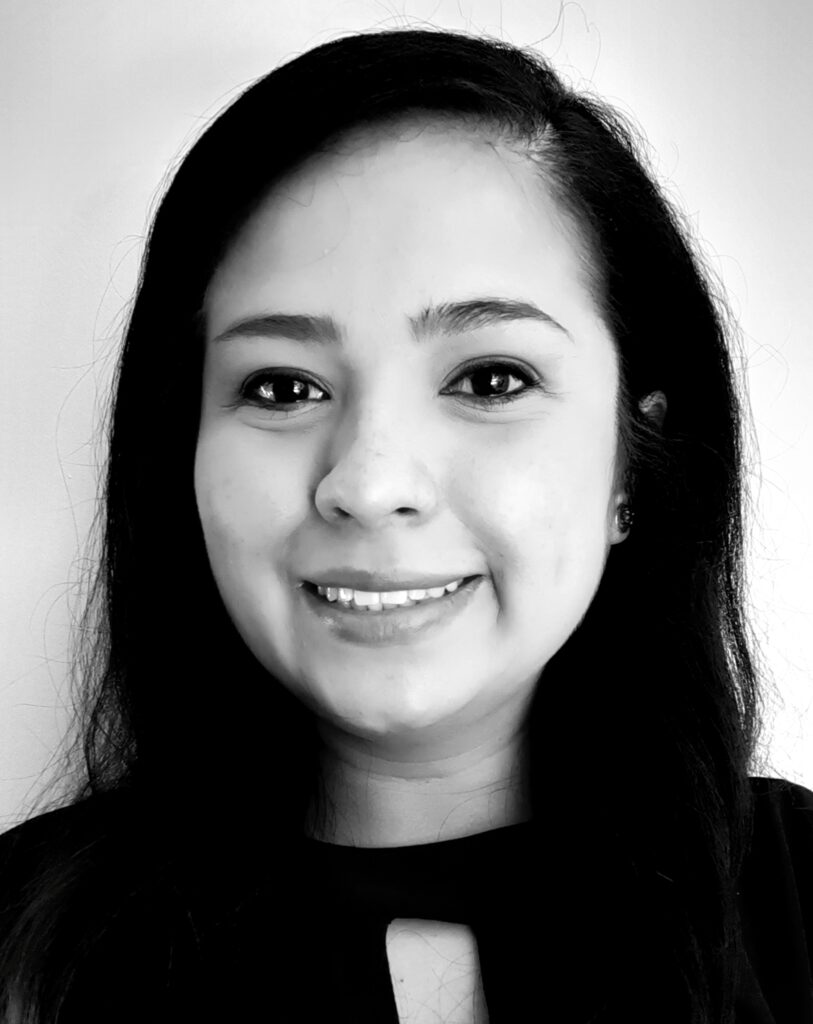
Miguel Angel Estrada Moreno
Atlantic Copper, Huelva, Spain
Strategies for slag valorisation in the copper industry
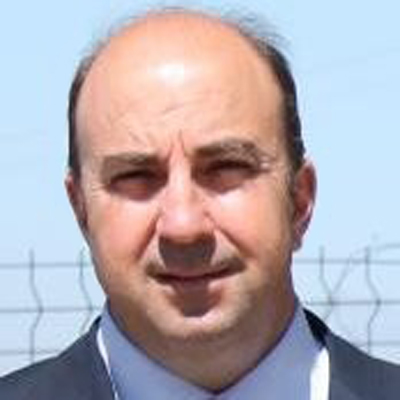
Vojtech Ettler
Head of IGMMR, Faculty of Science, Charles University, Prague
Vojtech ETTLER is a professor of Applied Geology at Charles University in Prague (Czech University). He obtained his BSc and MSc in Environmental Geology from the Charles University (Czech Republic) and his PhD in Environmental Mineralogy and Geochemistry from the University of Orléans (France). In his research he focuses on mineralogy, geochemistry and environmental behaviour of mining and smelting wastes (slags, flue dusts), soil pollution, contaminant mobility in the environmental systems and geochemical modelling. He has been involved in many research projects in active and abandoned mining/smelting districts (Europe, Africa, South America). He also serves as the Associate Editor of Applied Geochemistry.
ORCID: 0000-0002-0151-0024
Researcher ID: B-3014-2013
The leaching behavior of smelting slags: from contaminants to critical metals
Laboratory leaching tests are used to simulate the leaching behaviour of smelting slags under variable environmental conditions. The combination of various leaching tests with the speciation-solubility modelling and detailed mineralogical investigation of the primary slag phases as well as the secondary products formed during the leaching are useful tools for depicting (i) the geochemical processes affecting the releases of metal(loid)s into the environment and (ii) the extractability of valuable metals during the hydro-metallurgical processes. This paper will demonstrate the typical leaching scenarios relevant for the release of metal(loid) contaminants from slags, the experimental protocols and the results obtained by single-step leaching tests, kinetic batch leaching tests, pH dependence leaching tests and column (percolation) tests. The application of specific leaching tests mimicking the slag particles exposure in soil systems and contaminant bio-accessibility after incidental inhalation/ingestion of slag dusts will also be shown. In view of resource recovery from smelting slags, examples of extraction/leaching of the key critical metals (V, Ga, Ge,…) will be demonstrated.
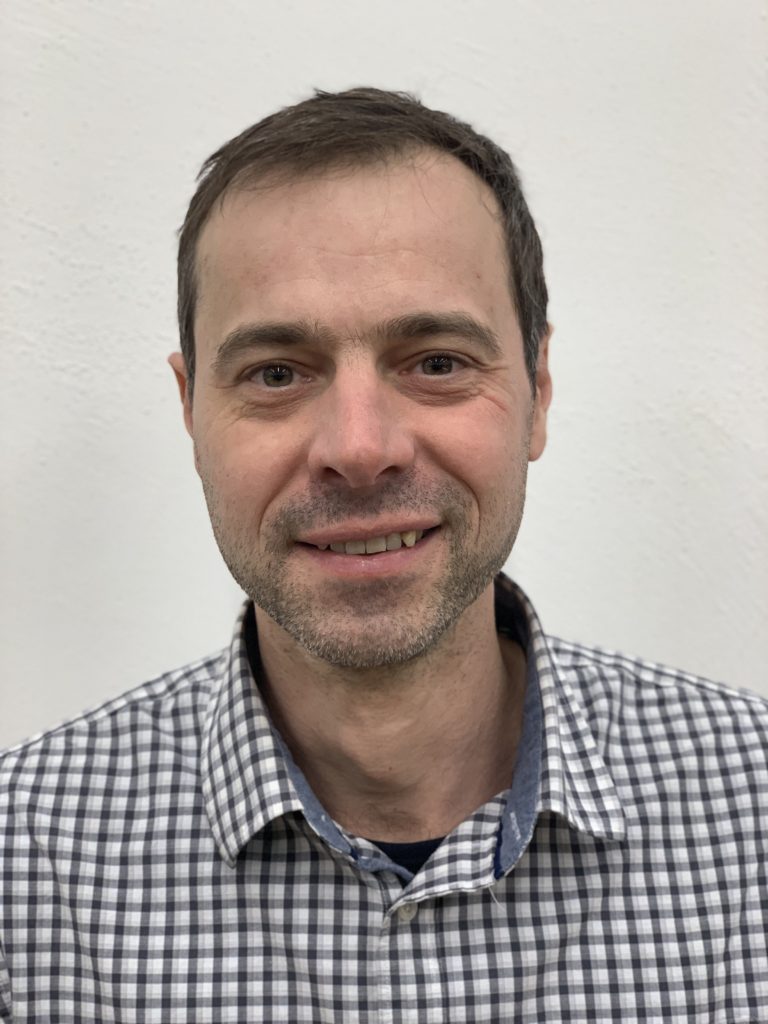
Florian Flachenecker
Recovery and Resilience Task Force, European Commission & University College London
Florian FLACHENECKER works in the Recovery and Resilience Task Force of the Secretariat-General of the European Commission. Florian is also an Honorary Lecturer at University College London (UCL) Institute for Sustainable Resources.
Previously, he was an Economist at the Joint Research Centre (JRC) of the European Commission, working at the intersection between research and policy, in particular on environmental innovations, the Sustainable Development Goals (SDGs) and firm growth. Florian also worked as an Economist at the Organisation for Economic Co-operation and Development (OECD) on environmental data and policy. He was a Visiting Fellow at the European Political Strategy Centre (EPSC) of the European Commission and a Consultant at the European Bank for Reconstruction and Development (EBRD).
Florian obtained a PhD in Economics from UCL for empirically investigating the effects of resource efficiency on competitiveness and climate change mitigation in the EU. Florian also holds a MA in Economics from the College of Europe, and a BSc in Economics from the University of Mannheim.
The Recovery and Resilience Facility of the European Union – towards a sustainable and circular recovery?
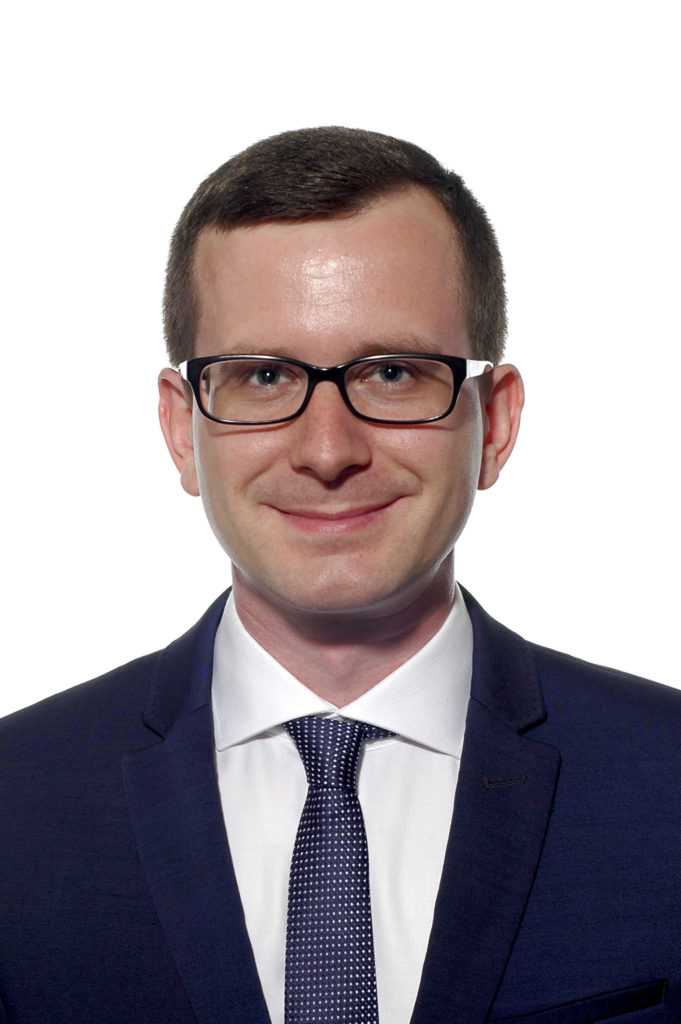
Ange Nzihou
RAPSODEE Research Center, IMT Mines Albi - France
Prof. Ange NZIHOU (M) is a Distinguished Professor of Chemical and Environmental Engineering since 2012.
Since 2000, he has developed outstanding expertise in research fields such as Energy and added value materials from Biomass and Waste; Elaboration, functionalisation phosphate based composites / hybrid materials (sorbents, fertilizers, catalysts, energy carriers, sensors, materials for energy storage) for energy, agriculture and depollution (liquid, gas, solid phases); Thermochemical processes (pyrolysis, gasification, reforming) for biochar, bioash and energy production; The behavior of pollutants such as heavy metals and aerosols (fine particles) and Kinetics and transfer phenomena are among its field of expertise.
Through these research and industrial projects, he has supervised 32 PhDs (21 graduated already, 10 co-advised with colleagues from top universities in USA, Canada, Ireland, China and India), 12 post-docs, published 160 papers in peer reviewed journals, 4 world patents (2 scaled-up at industrial level), 33 invited plenary and keynote lectures in international conferences, published about 170 proceedings papers at national and international conferences. He has chaired and co-chaired 10 conferences and 2 international summer schools. He has obtained about 6.5 M€ of research grants over the 20 last years. He has been chair and principal Investigator of joint Laboratories with industry. He is Visiting Professor at Princeton University (USA), University College of Dublin (Ireland) and Zheijang University (China). He is the Editor-in-Chief of the peer reviewed journal “Waste and Biomass Valorization” (www.springer.com/engineering/ journal/12649), and the founding Chair of the WasteEng Conference Series dedicated to the organisation of conferences and seminars on Waste and Biomass Valorisation (www.wasteeng2016.org) since 2005. He is the Editor of the Handbook on characterisation of biomass, biowaste and related by-products (https://www.springer.com/gp/book/9783030350192) published in February 2020.
He obtained some International and National significant scientific recognitions and awards such as the Grand Prix 2018 of the Academy of Sciences (France) for his outstanding contribution in science and technology of Energy transition. He was also awarded with the Erudite Professor of the Mahatma Ghandi University (India) in 2018. The previous recipients of this professorship are well known and outstanding international scientists, academicians and Nobel Prize winners. He is member Consultative Advisory Board of the PASET program (Scholarship in Innovation Fund) of the World Bank, and member of the scientific advisory board of the Worcester Polytechnic Institute WPI (USA) from. He was also promoted Knight of the National Order of Merit (France) in 2017 on the besthood of the president of France. He has frequently worked as evaluator for EU projects (RTD, SME, Intereg) under the FP7 and H2020.
Insights on ceramics for thermal energy storage using incinerator bottom ash

Caisa Samuelsson
Professor and Chair of Process metallurgy, Division of Minerals and Metallurgical Engineering, Luleå University of Technology, Sweden
Education and Degrees:
Docent in Process metallurgy at Luleå University of Technology (LTU), 2009.
Ph.D. degree in the subject area of Process metallurgy, LTU, 1999.
M.Sc. in Geotechnology, 1992, LTU
Professional experience:
Chaired Professor in Process metallurgy LTU
Professor in Process metallurgy LTU
Associate professor LTU
Lecturer at Division of Process metallurgy, LTU
Researcher at Division of Process metallurgy, LTU
Research Assistant at Division of Process metallurgy, LTU
Research activities:
Involved in a number of projects related to recycling and utilization of by-products in metallurgical processes in collaboration with industrial and academic partners, a.o within the Centre of excellence “Minerals and Metals Recycling Research Centre” -MiMeR and “Center for Advanced Mining and Metallurgy”- CAMM2.
Academic achievements:
Supervisor for 9 PhD degrees. Currently supervisor of 6 PhD students. Author of 70 papers in scientific journals and conference proceedings. Supervision of several master theses. Teaching in under graduate courses.
Slag valorisation – The mineralogical approach
Slag is a heterogeneous oxide material originating from high temperature processes.The composition and content of phases in slag shows a broad spectrum depending on a.o raw material, process conditions and slag treatment. The slag is in the metallurgical process used to separate undesired elements contained in the raw materials yielding the desired product, a metal or alloy. In its post process, slag has potential for utilization in external applications, e.g construction, provided technical and environmental performance is controlled. Modification of slag properties may be made in process or in post process treatment, however this has to be done without jeopardizing the quality of the main product of the process. To fully control and design high quality products based on slag, fundamental understanding of properties and reaction mechanisms in the different stages; from smelting process to cooling, post treatment and interaction with surrounding environment in application areas is essential. Based on a solid understanding of how the mineralogical composition influences properties, a suitable slag composition can be delineated in order to improve the use in a certain application. Examples of how environmental properties,leaching, can be understood and controlled by determination of minerals and entrained phases in slag matrix, their ability to contain metals of concern, e.g Cr, and dissolution of minerals and phases under different environmental conditions will be presented.
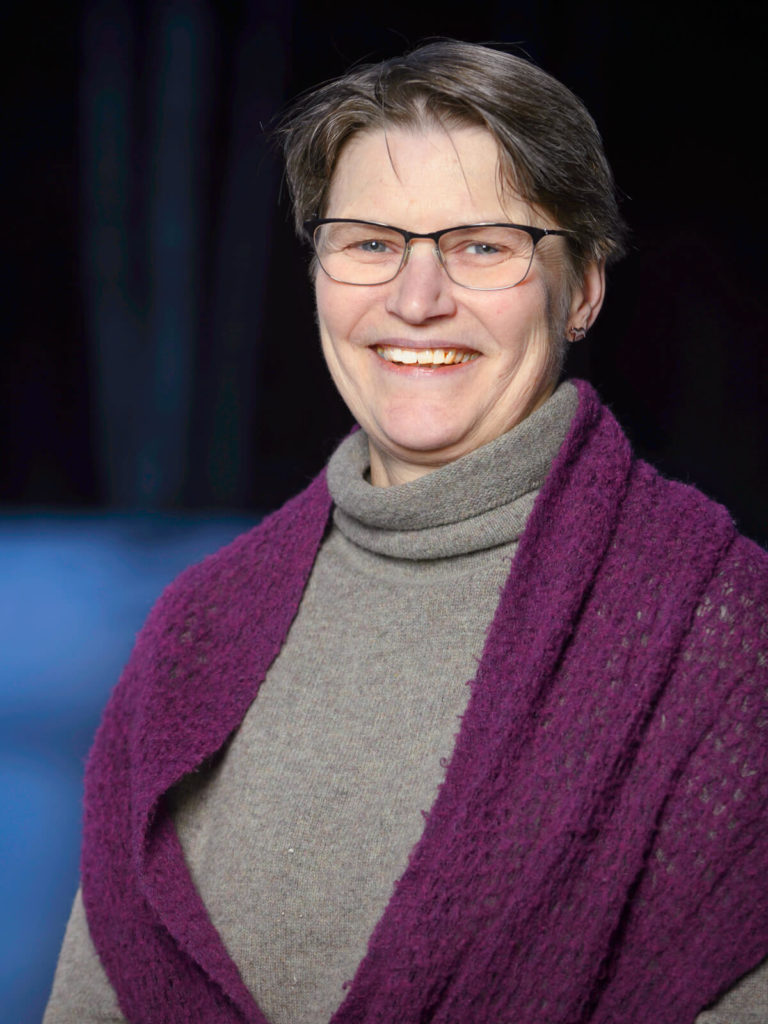
Johan van Boggelen
Operations & Technology Manager HIsarna Pilot Plant, Tata Steel
ir. Johan van Boggelen CEng MIMMM
Operations and Technology Manager of the HIsarna pilot plant at Tata Steel in IJmuiden.
Graduated from Delft University of Technology with an MSc in Materials Science.
Joined Corus R&D at their facilities in Teesside, UK, in 2002, mainly working on converter steelmaking and ladle metallurgy.
Started to be involved with HIsarna development in 2010, just before the first start up of the pilot plant.
Joined the HIsarna project full-time in 2014.
HIsarna: Considerations for valorisation of slag and other by-products when developing new processes
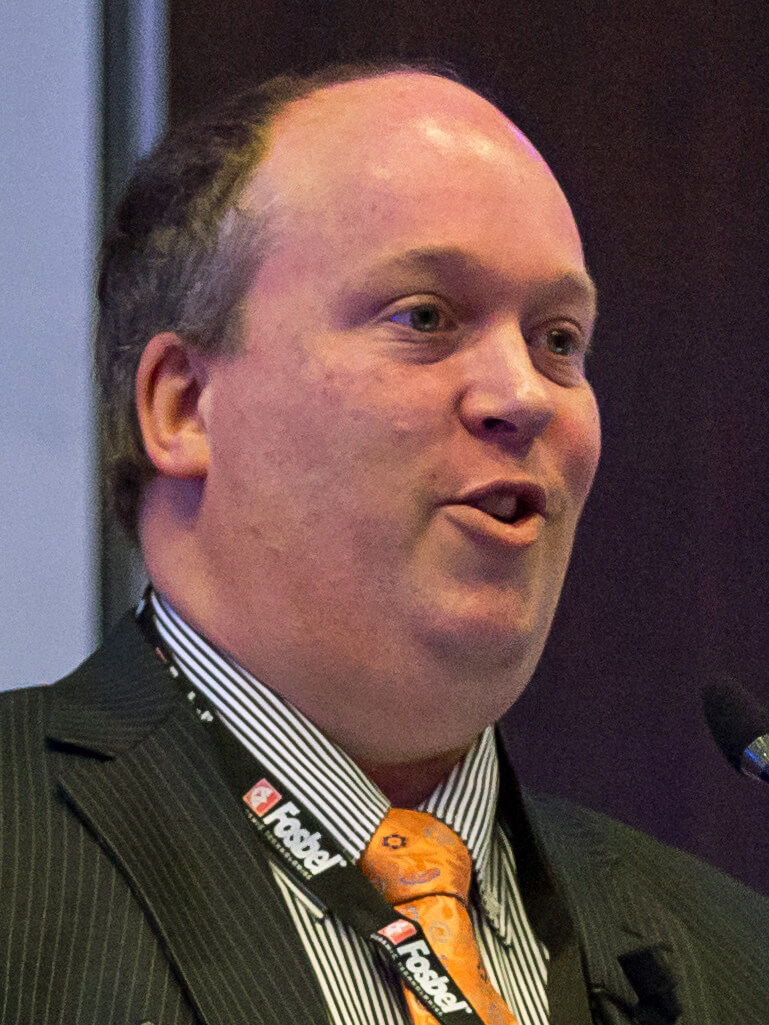
Presentations
Oral presentations
-
Lugas Raka Adrianto
ETH Zurich Life cycle assessment of emerging processes to valorize mine tailings -
Amit Ahsan
Secopta analytics GmbH In-Situ slag analysis with LIBS – The future technology to analyze slag sample fast and preparation free -
David Algermissen
FEhS - Building Materials Institute Future slag production in a low carbon steel industry – A break in the circular economy? -
Lukas Arnout
ResourceFull BV Industrial validation of alkali-activated slag concrete in agricultural environments -
Sander Arnout
InsPyro Integration of slag properties in daily process decision software -
Srećko Bevandić
Croatian Mineralogical and geochemical characterisation of metallurgical waste from a historic Zn-Pb tailing pond (Plombières, Belgium) -
Ludwig Blenau
TU Freiberg (INEMET) Carbothermic reduction of fayalitic slag with graphite – understanding reaction kinetics for pig iron production -
Zhongfu Cheng
Department of Materials Engineering, KU Leuven Numerical study on mass transfer parameters in a slag fuming process -
Andreas Ehrenberg
FEhS institute Dry and wet granulated blast furnace slag - Comparison of their cementitious properties -
Laura Finken
RWTH Aachen University, Steel Institute (IEHK) A new approach on BOF lime and dolime dissolution evaluation in the early stage of oxygen blowing -
Asghar Gholizadeh-Vayghan
Sustainable Materials Management, VITO, 2400 Mol, Belgium Application of granulated treated lead slag as supplementary cementitious material in concrete -
Michiel Giels
KU Leuven Designing highly reactive precursors from bauxite residue: can the RILEM R3 test assist? -
Cassian Gottlieb
Secopta analytics GmbH How LIBS based online analysis opens up new possibilities in slag recycling, slag valorisation and refractory recycling -
Barbara Horvat
Slovenian National Building and Civil Engineering Institute, Dimičeva ulica 2, 1000 Ljubljana, Slovenia The role of slag as a co-binder in alkali-activated mineral wool waste -
Shuigen Huang
Dept MTM, KU Leuven Microstructure evolution of slag and spinel particles of Zn fuming slag -
Federica Iaccino
ARCHE Consulting Valorized slags under Risk Assessment obligations -
Stergi Kapelari
PhD candidate A carbon-free melting process for Fe recovery from an Al and Na - depleted Bauxite Residue -
Stergi Kapelari
PhD candidate Simultaneous iron, alumina and soda recovery from Bauxite Residue (Red Mud), with H2 gas and NaOH -
Jihye Kim
University of Toronto Valorization of steelmaking slag using carbothermic reduction followed by acid baking–water leaching -
Jihye Kim
University of Toronto The CO2 sequestration by supercritical carbonation of steelmaking slag -
Efstathios Kyrilis
RWTH Aachen University Valorisation potential of V-bearing residues -
Hongbin Ling
KU Leuven Mineralogical characterization of antimony-containing metallurgical residues -
Lorien Luyckx
KU Leuven Phosphorous recovery from biomass combustion ash as sustainable alternative for phosphate rock -
Valentina Mariga
University of Bologna Sustainability analysis in the mining sector: a sustainability assessment of new recycling technologies for sulphidic mine residues valorisation -
Nour-Eddine Menad
BRGM Recovery of valuable metals from EAF slag by microwave assisted leaching -
Kazuki Morita
The University of Tokyo Effect of Cooling Conditions on Precipitated Phase and Alkaline Dissolution Behaviour of Steelmaking Slags -
Antoine-Floribert Mulaba-Bafubiandi
University of Johannesburg Valorization of slag from aluminum recycling as three legged pot are produced -
Stephanie Muller
BRGM Development of an environmental and economic decision support tool comparing steel slags management options -
Roberto Murillo Alarcón
KU LEUVEN Fe-rich slag-based porous inorganic polymers: Can hydrothermal curing enhance the properties? -
Arne Peys
VITO Utilization of sodium-rich lead-acid battery slag as alkaline activator for blast furnace slag -
Boudewijn M. Piscaer
Pantheon Performance Foundation Getting it on the market -
Alberto Mejía Pérez
Atlantic Copper S.L.U. Valorisation of air-produced iron silicate applications for construction materials -
Ryszard Prajsnar
Łukasiewicz Research Network - Institute of Non-Ferrous Metals Lead slags cleaning in a pilot TSL furnace -
Maximilian Schleiting
University of Kassel Shrinkage reduction of alkali activated slag by using burnt oil shale -
Sanna Torniainen & Juha Ylimaunu
Destia/Outokumpu Carbon footprint comparison of traditional road versus ferrochrome slag structure -
Leandro Voisin
University of Chile, Mining Engineering Department (DIMin) Behavior of silicon carbide- and alumina-based refractories with molten phases of copper matte and slag -
Alexander Wetzel
University of Kassel Ultra-high performance concrete based on alkali activated slag with reduced shrinkage
Poster presentations
-
Mohamed Aatach
University of Liege Process oriented characterisation of copper slag processed by flotation in view metals recovery -
Mohammad Bhuyan
University of Oulu Preparation of highly porous alkali-activated blast furnace slag foam and its characterization -
Zhongfu Cheng
Department of Materials Engineering, KU Leuven Study on zinc fuming kinetics in a bubble-stirred molten slag bath -
Nicole Dilissen
Department of Materials Engineering, KU Leuven Regeneration of alite and belite in hydrated cement paste by microwave technology -
Jillian Helser
KU Leuven Environmental assessment and valorization potential of waste from historical mining and ore processing -
Felicite Kingne Kingne
Vrije Universiteit Brussel Low-CO2 hybrid cements from non-ferrous metallurgy slags -
Lubica Kriskova
KU Leuven Use of metallurgical residues as supplementary cementitious materials -
Hongbin Ling
KU Leuven Arsenic removal from crude antimony trioxide by selective leaching in nitric acid solution -
Pavel Leonardo Lopez Gonzalez
KU Leuven, Department of Materials Engineering Evaluation of factors involved in the recycling of alkali-activated BOF-slag mortars -
Antoine-Floribert Mulaba-Bafubiandi
University of Johannesburg Zinc recovery from smelter slag using macadamia nutshell and valorisation of secondary slag -
Roberto Murillo Alarcón
KU Leuven Porous inorganic polymers from Fe-rich slags by mechanical foaming -
Rui Novais
Department of Materials and Ceramic Engineering / CICECO- Aveiro Institute of Materials, University of Aveiro Inorganic polymer adsorbents: a safe and efficient approach to depollute heavy metal contaminated wastewaters -
Ioanna Papayianni
Aristotle University of Thessaloniki Characterization of Ladle Furnace Slag as Supplementary Cementing Material and Alkali-activated Precursor -
Rainer Seeling
ALFERROCK GmbH ALFERROCK – Paradigm shift within the aluminium industry -
Grace Tawane
MINTEK Extraction of vanadium from discard titaniferous slag using sulfation roasting process -
Ladji Tikana
Deutsches Kupferinstitut From stone to stone – The circular path of iron silicate -
Jorn Van De Sande
Vrije Universiteit Brussel Fire-resistant inorganic polymer foams made from Fe-rich slags -
Jules Vermeiren
MEAM Dehydration of Portland cement and slag blended cement pastes and mortars by microwave heating -
Roger Vizcaino
CELSA Cyclo-Slag -
Yannan Wang
Department of Materials Engineering, KU Leuven Thermodynamic simulation of CaO modified Zn fuming slag -
Nana Wen
KU Leuven Department of Materials Engineering, 3001 Leuven, Belgium The effect of the chemical composition of slag in the MgO-CaO-FeO-Al2O3-SiO2 system on the reaction kinetics and compressive strength of alkali activating materials -
Ling Zhang
KU Leuven In-situ impedance measurement during slag cooling
Topics
- Fundamental studies on liquid and solid slags
Research focusing on the physical, chemical, thermodynamic and structure properties of liquid and solid slags, such as viscosity, phase equilibria, interfacial properties, polymerisation degree, interactions between minerals and gels... It considers both experimental and characterisation studies, calculations and (nano-scale) modelling work.
- Hot-stage slag engineering, slag solidification, slag conditioning, internal reuse
Research focusing on:
- The hot-stage engineering of slags and the solidification procedures with the aim to improve the slag valorisation opportunities. It includes lab or pilot scale studies dealing with the effect of additions at high temperature and/or of the cooling procedures on the properties of the liquid and/or solid slag. Studies dealing with the mineralogy and leaching behaviour of the slag are included in this.
- Phenomena and reactions during weathering of metallurgical slags, and the effect of weathering and the weathering conditions on the slag properties and the slag valorisation opportunities.
- The recycling of slag within metallurgical plants and the evaluation of this procedure.
- Slag cleaning and metal recovery
Research focussing on:
- Clean slag production for added-value application of metallurgical slags and/or other industrial residues. This includes slag design for zero waste metallurgy, deep reduction of ferrous and non-ferrous slags, plasma fuming, removal of harmful component from slags.
- Recovery of base metals, rare earth and precious metals from industrial wastes and/or secondary resources. In particular, research that highlights metal recovery through both metallurgical processes (e.g. pyro-, hydro- and electro-metallurgy), and mineral processing (e.g. magnetic separation, gravity separation, flotation separation)
- Production, properties and performance of slag-based products
Research focusing on the conception, development, optimisation or understanding of innovative production processes that promote slag valorisation and the generation of slag-based products. It also includes studies addressing the effect of the production process on the desired properties of existing products or the evaluation of their performance at any stage of development.
- Process development for sustainable technologies
Research on slags compatible with the UN Sustainable Development Goals No. 12 (“Ensure sustainable consumption and production patterns) and 13 (“Take urgent action to combat climate change and its impacts”) and/or the European Green Deal. In particular, research that promotes and emphasises novel ideas and/or technologies focusing on sustainable slag management, lower carbon emissions, and more efficient use of resources.
- Industrial case studies on slag/residue valorisation
Research at pilot-plant or industrial level (Technology readiness level 5 or higher) that aims at upscaling, implementing, and/or optimising slag valorisation. Pre-and feasibility studies highlighting evaluation from a technical perspective are also welcome, as well as technical reports of lessons learned from full-scale implementations.
- Environmental and economic analysis
Research which focuses on environmental and economic analysis of slag valorisation, metals and heat recovery. In particular, studies that use life cycle assessment, life cycle costing, cost-benefits analysis and other assessment tools to evaluate the environmental and economic trade-off the costs of the recycling processes and the benefits of materials and energy recovery.
- Policy and regulations
Research focusing on how policy and regulation can boost for valorisation of slag and other residues from high-temperature processes. It includes studies from public bodies or private sector, using real case studies or prediction models to analyses the consequences of policy and regulations on the environmental performance of high-temperature industry.